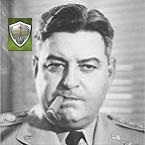damezzi
Posts: 299
Joined: 7/18/2007
Status: offline

|
Ralph, I think I may have (just may have) discovered one point of the system that may be distorting combat results giving sometimes the impression of arbitrariness. If you have the patience to read through it, since sometimes, due to my English, I may be repetitive in order to make things clear. I know that, since Iím not a forum regular, my impressions will probably be taken less seriously than that of those who manifestly know the game system well, but Iíve dedicated some time this week for some tests and came to some conclusions.
In my opinion (so far, since some extra tests may be needed to confirm) proficiency difference dominates the probability of dislodging a unit, independently of losses (even if those play a part, too), while weapon type, odds, terrain, deployment dominates casualties. That way we come to a completely artificial result, so that one would use proficiency difference (or any other variable that may be influencing the break-off checks) to advance and odds, terrain, weapon type, etc for causing casualties. Summarizing, the break-off checks may be nullifying the consistent results of the shot calculations (my tests show that the core of the system is in fact very solid). As youíve said, Toaw calculates each shot taking into account each type of weapon in a straightforward way and those results seem to be realistic as far as I could verify. The problem is that to end it all, as the conclusion of the combat resolution, you have the break-off check, forcing a defender to disengage and, not only leaving the defensive terrain, but also breaking at times. If this check isnít consistent, it doesnít matter if the core of the combat engine is; it will spoil the results with the break-off consequences.
And I think it isnít. In fact, I think that those checks should be a lot more dependant on order emphasis and relative shots results and much less dependant on proficiency or any random value. In the manual proficiency isnít stated as influencing break-off, but for some reason I could verify itís ample effect on the break-off chances.
On the first test (all units at 80% proficiency) units took longer to break-off and to evaporate (and evaporation is one thing that sometimes seems completely random). On the second test (all units at 40% proficiency) units broke-off and evaporated a lot more easily and results became more unpredictable, but similar to the first test on the long run. I could already imagine what would happen on a test with units with different proficiency levels and I set one using only three of the units of the first test, since I thought it would be enough. The third test was made with attacking unit with 80% proficiency and defending units with 55% proficiency. The first thing one should consider is that proficiency increase units strength level and more proficient units should cause more casualties and make enemy break-off more easily too, advancing further. Well, base on the second test, I could predict that the last part of this statement would be true, and it was in fact. But that didnít change the losses (well, not much). Attacker would advance very easily, dislodging defenders on difficult terrain (dense urban in this case Ė in the open it was already easy), but at the end, defenders would make attackers evaporate and when evaporating themselves, would cause the same loss ratio as before. So, proficiency difference make units break-off, but with no relation to casualties (at least, no significant relation). That spoils the solid results of the losses calculations. What should one do? Use proficient unit to dislodge and advance and strong units with proper weapon combination to cause damage? In fact, proficiency could cause even further damage indirectly in a game situation, since units breaking-off near other, sometimes strong, enemy units will have to disengage and leave defensive terrain. So, what matters if Toaw can calculate losses very well when a single variable with the help of a strong random component (at least it seems so, since frequently results for breaking-off fluctuate a lot, not being as consistent as losses results) will define your capacity to advanceÖ and frequently advance is more important than casualties.
To make those tests I have created a scenario which I called ďTerrain RaceĒ. Iíve place five rows (doubled) of five different kinds of terrain and created attacking units with slightly better odds. The first five rows show attacking tank units against defending infantry and the last five show infantry vs infantry. I thought about a test that, even if less precise, would simulate a more Ďgame likeí situation than the previous test Iíve made.
On the first test Iíve set unit proficiencies to 80% and set all units to ignore losses. All units were fully supplied and supply points were distributed along the tracks, so that supply wouldnít influence.
From turn 1 on I would attack always when possible with the attacker unit and on the defender turn I would set them back to ignore losses. I would keep this, controlling each unit, until one of the sides in each track evaporated. So I could check how far a unit could advance, how long would it take to advance, and how long would it take to evaporate using a game like situation.
We can see that results are very consistent on the long run when proficiency is the same for all units. Tank will smash infantry in the open and advance fast, infantry will have a much easier time stopping tanks in dense urban. Combat in forest, bocage, and mountains will be more balanced, but mountains would make casualties to be milder, making combats last longer. In one occasion, I saw tanks advancing faster after infantry had lost the few anti-tank teams it had, but causing little damage, as one would expect in mountainous regions when infantry destructive power has been gone, but not itís defensive capacity. All that was very solid. Only perhaps forest presented a surprising parity with bocage and mountains, if we consider modifiers, but the fact is that the results were consistent and predictable to some degree (what is great for a game, since there is no point on pushing counters just to see what the dice will say)
The second test was the same, but with tank vs infantry only. Proficiencies were changed to 40%. Results were more extremes. Units would evaporate a lot earlier and break-off much more frequently. Usually I would have to set much more combats per turn. To be precise, one would have to run extra tests, due to the more extreme results, but as the table shows, they werenít much different than the ones from the first test, if taken relatively.
The third test was the decisive one, since I just wanted to confirm what I suspected. Attackers were given 80% proficiency against 55% of defenders. It was a feast for attackers in terms of advance (and the numbers shown are conservative, since once at least, defender was able to fortify in forest and created an extreme result which I included for fairness). First I thought it may be due to proficiency changing the attacking capacity of units, but then I noticed that the results in terms of evaporations and casualties werenít that different from those of the previous testsÖ only break-off chance was. That meant: attacking units were advancing without killing and sometimes, while being killed. Iíve watched attacking units which kept advancing with already lower odds, taking greater damage and easily dislodging a more efficient defender only because itís check was favorable and the only variable Iíve changed was proficiency, but it may be other the causeÖ I donít know.
Well, letís say you take a fanatic faction unit with low proficiency, but able, due to defensive terrain, odds etc to cause more damage than the attacking one and ordered to hold the ground to the last man. Itís improbable they would break-off. I think the break-off check is nullifying the good loss calculation results that Toaw is able to bring and breaking off can be worse than taking damage. Itís extremely artificial to use the formula: proficient units advance faster and dislodge enemy even when not causing enough losses while stronger units with lower proficiency causes more damage but are unable to dislodge enemy that fast. Iím donít know the program to state what is the problem with certitude, but I really think it must be on the break-off check that had to be less random and more based on actual loss ratio.
Well, thatís the main point, but another thing that I think completely unrealistic is the way entrenchment level is raised. In less than two days (on a half day turn game) a defender in the open can bring up a defensive position stronger than an entrenched unit in dense urbain terrain. That seems absurd. Toaw simulates different stacking penalties and movement rates for different scenario scales, but entrenchment is lacking this kind of treatment. It would be nice to see entrenchment levels raising slowly during full day turns, being helped in a more intense fashion by engineer units. It would not only bring a new nuance to Toaw, since players would have to administer engineers and fortification efforts more closely, having to choose regions which should have precedence in terms of fortification, but small scenarios like Kasserine would feel more real, without the automatic routine of digging in which donít add anything to the range of available player decisions. One canít build a dozen of strong fortified points every two days in the desert. Sure strong fortified points could be build pretty fast due to extraordinary efforts, but that wouldnít happen all around, all the time. The way it is, it is the same thing to defend a vital dense urban hex and a vital open hex which are two days away from enemy advancing forces and infantry can spread fortifications in the open to deal with tanks on a 3 or 4 days high movement scenario in the desert.
I know that any solution must consider already created scenarios, which are one of the great commercial advantages of Toaw, but creating different rates of fortification and stronger influence of engineer would maintain compatibility with all scenarios, like what is being done with supply. Only the scenarios dynamics would change and that could be great to bear new life to old scenarios.
Those are just a player point of view. I keep thinking that there is no other operational wargame as good as Toaw, but Toaw can be even better. Those engine details and a more modern interface are all that must be changed to make Toaw live for the next decade.

 Attachment (1) Attachment (1)
|
 Printable Version
Printable Version
















 . This hasn't any evidence in millitary history. Fortified positions in mountains were always recognized as much more difficult to assault. IMHO effects of digging and terrain should be additive.
. This hasn't any evidence in millitary history. Fortified positions in mountains were always recognized as much more difficult to assault. IMHO effects of digging and terrain should be additive.  .
. 
 In addition, the unit doesn't go to retreated, it goes to into reorganizing, which is fairly drastic. It won't be attacking again that turn, so the overall affect shouldn't impact balance too much.
In addition, the unit doesn't go to retreated, it goes to into reorganizing, which is fairly drastic. It won't be attacking again that turn, so the overall affect shouldn't impact balance too much.  New Messages
New Messages No New Messages
No New Messages Hot Topic w/ New Messages
Hot Topic w/ New Messages Hot Topic w/o New Messages
Hot Topic w/o New Messages Locked w/ New Messages
Locked w/ New Messages Locked w/o New Messages
Locked w/o New Messages Post New Thread
Post New Thread